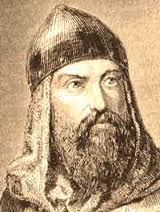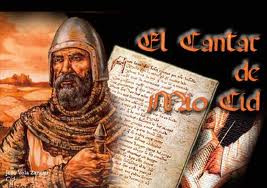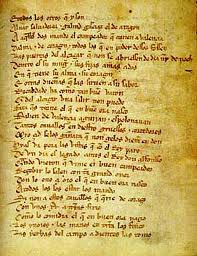El Cantar del Mio Cid

The 'Cantar del Mio Cid' (The Poem of the Cid) is the oldest Spanish epic poem preserved. It's based on the true story of Rodrigo Díaz de Vivar, known as El Cid, and it takes place during the Spanish Reconquest. It's the first known extensive narrative work of the Spanish literature written in a Romance language, and it was composed around 1200.
Apart from being the oldest Spanish epic poem, it's also the only one that's been preserved almost in its entirety. The first page of the original has been lost, and another two inside the codex, although the content can be deduced from the prosifications made by the chroniclers. The poem is composed of 3735 verses of variable extension. It's not divided in stanzas; the text flows as one long stanza, with the verses grouped through rhyme.
Cantar del Mio Cid - Story and structure
'Cantar del Mio Cid' revolves around the topic of the restoration of lost honor, which will be a greater honor than the one lost.

The poem begins with the banishment of Cid, the first reason for dishonor, after being accused of stealing. His titles and lands are also taken away. After the Conquest of Valencia he gets the royal pardon, regains his lands and is named Lord of Valencia; to affirm his new lordship, his daughters are wed to the Infants of Carrión. However, this brings another tragedy when his daughters are raped, beaten and left to die in Corpes. They are found and, following the law of the Middle Ages, the marriages are nullified in court, where the King decrees the loss of privileges of the Infants of Carrion while Cid's daughters are remarried to two Spanish princes, restoring the lost honor.
Thus, the internal structure follows the pattern acquisition-loss-restoration-loss-restoration through the hero's honor. At the very beginning (which doesn't appear in the Cantar), the Cid is good liege lord to the King. The banishment is the first loss; the Conquest of Valencia and the marriages of his daughters to the Infants are the first restoration. The second curve begins with the loss of honor of his daughters and is restored after their marriage to the princes.
The external structure is based on a division of the Cantar in three parts:
- In the first part, Cid is banished from Castile and leaves his daughters and wife at home to begin his military campaign to restore his honor.
- In the second part, Cid conquers Valencia and his daughters are wed to the Infants of Carrión, even though Cid doesn't trust them.
- In the third and last part, the Infants of Carrión leave Cid's daughters beaten in the middle of the country. He asks the King for a trial against the Infants and he wins. His daughters are promised then to the Infants of Navarre and Aragón.
Cantar del Mio Cid - Characteristics and topics
The Cantar del Mio Cid is different from the French epic in the absence of supernatural elements, the restraint of the hero and the plausibility of his adventures. The Cid is shown as the perfect example of patience and balance: he doesn't rush into battles and prefers to think things through before acting. He's also in very good terms with many muslims, like his ally and liege lord Abengalbón, who reflects the Mudejar status and the coexistence of the Arabic and Spanish societies.

The gain of status through the arms, especially in areas next to the borders with the Moors, is a recurring theme. Cid begins the tale being only a liege lord (a noble man of the lowest status) but his battles and Conquests help him overcome his humble beginnings, gaining him riches and honor and even a title as Lord of Valencia. The promise of his daughters to the Infants of Navarre and Aragon indicates an almost royal dignity, In fact, the Lordship of Valencia can be compared to the Christian Reigns in terms of importance, even if Cid never ceases to see himself as a vassal of the King.
Another difference with the French epic tales is the fact that the hero is presented as being human: he's thrown off the horse in several occasions, and he even errs a couple of hits; far from being a loss of honor, this narrative strategy gives power to the winnings of the Cid.
Being the oldest Spanish epic poem, 'El Cantar del Mio Cid' is studied in all Spanish schools. The original text is kept in the Spanish National Library, and it can be consulted in the digital library of Cervantes Virtual.

